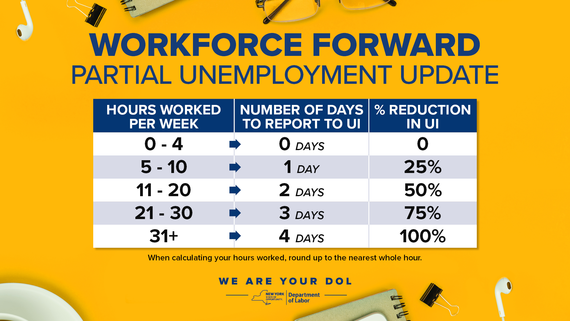No one likes bad reviews but why make a case out of it.
Mirza v. Amar, Dist. Court, ED New York January 12, 2021:
"As an initial matter, I must account for the context in which the allegedly defamatory statements were made, as this can "signal[] to the reader that what is being conveyed is likely to be opinion rather than fact." Levin v. McPhee, 119 F.3d 189, 196 (2d Cir. 1997). Here, the context is a review on Yelp, an Internet forum. "New York courts have consistently protected statements made in online forums as statements of opinion rather than fact." Ganske, 2020 WL 4890423, at *4 (collecting cases). Statements made on Internet forums are made in a unique context in that they are generally informal and unedited. See id. This context leads "readers [to] give less credence to allegedly defamatory remarks published on the Internet than to similar remarks made in other contexts." Id. (quoting Sandals Resorts Int'l Ltd. v. Google, Inc., 86 A.D. 3d 32, 44, 925 N.Y.S.2d 407 (1st Dep't 2011)). That defendant's allegedly defamatory statements appeared on Yelp — an Internet forum specifically designed for the publication of crowd-sourced opinionated reviews about businesses — "conveys a strong signal to a reasonable reader" that the statements are defendant's opinion. Id. When a posting "viewed in its full context, reveals that defendant is a disgruntled consumer and that [her] statements reflect [her] personal opinion based upon [her] personal dealing with plaintiff," the context strongly suggests that the statements are merely "subjective expressions of consumer dissatisfaction" and thus nonactionable opinion. Penn Warranty Corp. v. DiGiovanni, 10 Misc. 3d 998, 1005, 810 N.Y.S.2d 807, 815 (Sup. Ct. 2005).
Because Yelp reviews are used by consumers to provide their positive or negative opinions of businesses, the context strongly signals to readers that the review merely reflects the writer's opinion. As described below, the allegedly defamatory statements here do not overcome that context and are not actionable. Defendant's language is full of opinion and hyperbole and, to the extent that any isolated statement within the review might be construed as factual, when the review is read as a whole and in context, the message conveyed is merely the negative but protected opinion of a disgruntled customer.
Plaintiffs first point to defendant's statements that she "suspect[s] [Dr. Mirza] just uses watered-down Botox for every `filler' procedure" and implying that Dr. Mirza uses "fugazzi fillers," based on her dissatisfaction with the results of the procedure and belief that "Voluma doesn't go in the lips nor nasal folds" and "Voluma has a VERY pin-point thing needle." Plaintiffs claim that these statements are false because Dr. Mirza uses authentic products that are not "fugazzi" (fake) and the product Voluma can be injected anywhere and does not come packed with any special type of needle.
The statement that defendant "suspect[s]" that Dr. Mirza uses watered-down Botox for fillers clearly is a statement of opinion and not fact. Even if the statement is viewed in isolation, the use of the phrase "I suspect" demonstrates that defendant is providing her opinion or belief about the quality of the fillers used by Dr. Mirza.
A statement of opinion may be actionable if it "implies that it is based upon facts which justify the opinion but are unknown to those reading or hearing it." Sorvillo v. St. Francis Preparatory Sch., 607 F. App'x 22, 24 (2d Cir. 2015) (citation omitted). In such a situation, the "actionable element of a `mixed opinion' is not the false opinion itself — it is the implication that the speaker knows certain facts, unknown to his audience, which support his opinion and are detrimental to the person about whom he is speaking." Id. (citation omitted). However, "a statement of opinion that is accompanied by a recitation of the facts on which it is based or one that does not imply the existence of undisclosed underlying facts" is not actionable. Id. (citation omitted).
Here, defendant's opinion that Dr. Mirza did not use Voluma but instead used watered-down Botox does not imply that she has knowledge of facts undisclosed to the audience. Instead, defendant discloses the alleged facts on which she bases her opinion — her belief that the Voluma product is not meant to be injected in the places in which Dr. Mirza offers it and that it requires a different type of needle, and the (unchallenged) fact that Dr. Mirza used a pre-filled syringe rather than mix the product in front of her. According to Dr. Mirza, defendant is wrong about the use and packaging of Voluma. Although the statements about Voluma are facts capable of being proven true or false, `[r]ather than sifting through a communication for the purpose of isolating and identifying assertions of fact, the court should look to the over-all context in which the assertions were made and determine on that basis whether the reasonable reader would have believed that the challenged statements were conveying facts" about the plaintiffs. Enigma, 194 F. Supp. 3d at 280 (quoting Davis, 24 N.Y.3d at 270, 998 N.Y.S. 2d 131). Defendant's false statements about the Voluma product do not convey facts about plaintiffs, but merely serve to support her stated opinion about Dr. Mirza's fillers. Moreover, defendant's opinion was based in part on stated facts about Dr. Mirza's procedure that he does not contend are false. Accordingly, the opinion is not actionable.
The suggestion that Dr. Mirza uses "fugazzi fillers" is not actionable for similar reasons. As an initial matter, the statement actually refers to injections she received from a different doctor, which she states were "not fugazzi fillers," although I agree that the comparison suggests that defendant believes Dr. Mirza does use "fugazzi fillers." However, "fugazzi" is slang and strikes me as the type of loose, figurative or hyperbolic statement that is not generally actionable. Dillon v. City of New York, 261 A.D.2d 34, 38, 704 N.Y.S.2d 1 (1st Dep't 1999). Moreover, the context of the statement adequately signals to readers that this is just defendant's opinion as a disgruntled customer.
Plaintiffs next point to defendant's suggestion that Dr. Mirza is not a "REAL and legitimate doctor" and that readers should save their money to see a "reputable" or "real" doctor. Plaintiffs argue that this statement is false because Dr. Mirza is a licensed medical professional who operates a legitimate business. Viewed in their context, the statements that Dr. Mirza is not a "real" doctor are unactionable figurative and hyperbolic statements, even if they are deprecating to plaintiffs. See Dillon, 261 A.D.2d at 38, 704 N.Y.S.2d 1. Defendant is not implying that she has undisclosed knowledge that Dr. Mirza, in fact, is not a licensed physician, and no reasonable reader would interpret the statements in that way. Instead, the context demonstrates that these are figurative statements meant to highlight defendant's dissatisfaction with Dr. Mirza and the procedure he performed on her.
Plaintiffs next point to defendant's statement that readers should "[a]void this sociopathic doctor who uses multiple aliases, works out of a gym bag, and watered down BS filler." Defendant challenges the first and last part of the statement, arguing that they are false because he does not have any mental health condition and he uses authentic fillers. For the same reasons as described above, the claim that Dr. Mirza uses "watered down BS filler" is not actionable. As to the claim that Dr. Mirza is a sociopath, although it is certainly a hostile statement, it is not actionable defamation. Instead, it is unactionable hyperbole and fiery rhetoric. See Ganske, 2020 WL 4890423, at *5 (collecting cases demonstrating that hyperbole and fiery rhetoric are not actionable defamation). The statement is made in an update to the Yelp review, authored sometime after defendant learned of this lawsuit against her. Defendant writes, "LMAO! He tried suing me for a million dollars because of my review. . . . Too funny. Loser. In your dreams." She tells him that he should get "some serious psychological help instead of suing people who don't like your crappy service and attitude." Given the context and the fiery and excessive language, no reasonable audience could conclude that defendant's statement about Dr. Mirza's mental health has any basis in fact. See Treppel v. Biovail Corp., No. 03-CV-3002, 2004 WL 2339759, at *12 (S.D.N.Y. Oct. 15, 2004) ("[A]n opinion may be offered with such excessive language that a reasonable audience may not fairly conclude that the opinion has any basis in fact."). Accordingly, the statement is not actionable defamation.
The last allegedly defamatory statement is defendant's claim that plaintiffs are "going against state orders to be closed as you are not an essential business." Although this isolated statement is technically one of fact that is capable of being proven true or false, the context of the statement again mitigates against a finding of defamation. This statement was made at the end of a new Yelp review that is best described as a two-paragraph rant about Dr. Mirza, his business, and this suit. Defendant writes, "this sick man is still suing people during a global pandemic. peoples [sic] families and kids are dying mirza [sic]." It goes on for several sentences in which defendant tells the readers that she is "so tired of the bs" and tells Dr. Mirza to "get some ethics already" and that she is reporting his practice to Yelp because she's "done with the fear mongering threats because you don't like your bad reviews." The review demonstrates defendant's significant hostility towards Dr. Mirza. But looking at "the content of the whole communication, its tone and apparent purpose" — namely, to criticize Dr. Mirza for suing authors of negative reviews — no reasonable reader could view the post as expressing any facts about plaintiffs. See Penn Warranty Corp., 10 Misc. 3d at 1004, 810 N.Y.S.2d at 815.
In any event, even if this last statement could be considered defamatory, I could not find that it was made with the requisite level of fault. Where content is arguably within the sphere of legitimate public concern, the standard is whether the publisher acted in a grossly irresponsible manner without due consideration for the standards of information gathering and dissemination. See Ratajack v. Brewster Fire Dep't, Inc., 178 F. Supp. 3d 118, 160 (S.D.N.Y. Mar. 31, 2016). New York interprets matters of public concern very broadly. Defendant's reviews of plaintiffs' public business qualify as commenting on a matter of legitimate public concern and render plaintiffs limited purpose public figures. See Romeo & Juliette Laser Hair Removal, Inc. v. Assara I LLC, No. 08-CV-0442, 2016 WL 815205, at *9 (S.D.N.Y. Feb. 29, 2016) (hair removal company was limited purpose public figure). Thus, plaintiffs must show that defendant published the statements with "actual malice," i.e., "knowledge that the statements were false or with reckless disregard as to their falsity." Id. Here, there are no allegations or evidence to establish that defendant knew that plaintiffs' business is an essential business that could legally operate under New York State guidelines during the COVID-19 pandemic, or that she made this statement in reckless disregard of that truth.
Because all of the allegedly defamatory statements in defendant's Yelp review are nonactionable statements of opinion, plaintiffs' defamation claim is dismissed as a matter of law.
Finally, I note that defendant's posts probably disclose a lot more about her than they do about plaintiffs. This is clearly someone with an axe to grind and I do not believe any reasonable reader could give her posts any credit. It would unduly raise her platform to elevate her philippics to the level of defamation."










